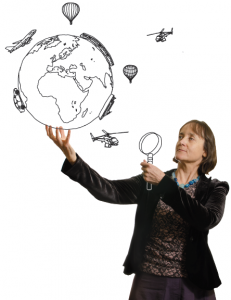 What we’re doing
What we’re doing
What we’ve found out so far
Technological innovations, such as
- developments in electric vehicles that increase range and lower price
- much more efficient internal combustion engines
- autonomous or semi-autonomous cars
- induction charging of electric buses
- 3-D printing
Businesses seeing value in efficiency, such as
- providing efficiency training for drivers of freight trucks
- inland ports which consolidate freight and make multi-modal systems easier
- using information technology to design better routes for freight vehicles and matching loads
- smart logistics incorporating rail for long-distance, and cargo trams or electric trucks for local delivery
In the New Zealand Delphi, we wanted to gain an understanding of expert views on the drivers of change to New Zealand’s transport system. The identified the following trends, innovations and step-changes:
Trends:
Rising fuel prices were identified as the trend most likely to become widespread within 10 years, and to transform the transport system away from BAU in the long term. An ageing population and an increasing percentage of the population in urban areas were also important trends likely to become widespread within 10 years.
Urban form that supports active transport (walking and cycling) and public transport (bus and train), and increasing investment in public transport infrastructure were thought to be important trends that would transform the transport system away from BAU.
Innovations:
Participants identified ultrafast broadband and high quality videoconferencing as the most likely innovation to become widespread within 10 years.
Demand management through road pricing, multi-modal integrated public transport systems and bicycle infrastructure were thought to be the most likely innovations to transform the transport system away from BAU.
Step changes:
The likely step changes to become widespread in the next decade were identified as: spikes in the price of liquid fossil fuels, political instability in oil rich countries, and constraints in oil supply.
Sustainability becoming a major driver of policy at all levels of NZ government and for business, followed by constrains in oil supply, and political instability in oil rich countries are the step changes deemed most likely to transform New Zealand’s transport system away from BAU in the long term.
Participants were also asked to identify the timeframes in which these changes were likely to occur, and the trends, innovations and step changes requiring intervention. These findings and more are available in the published report.

